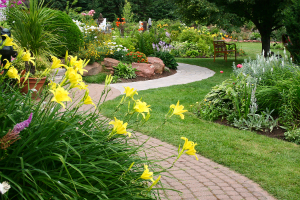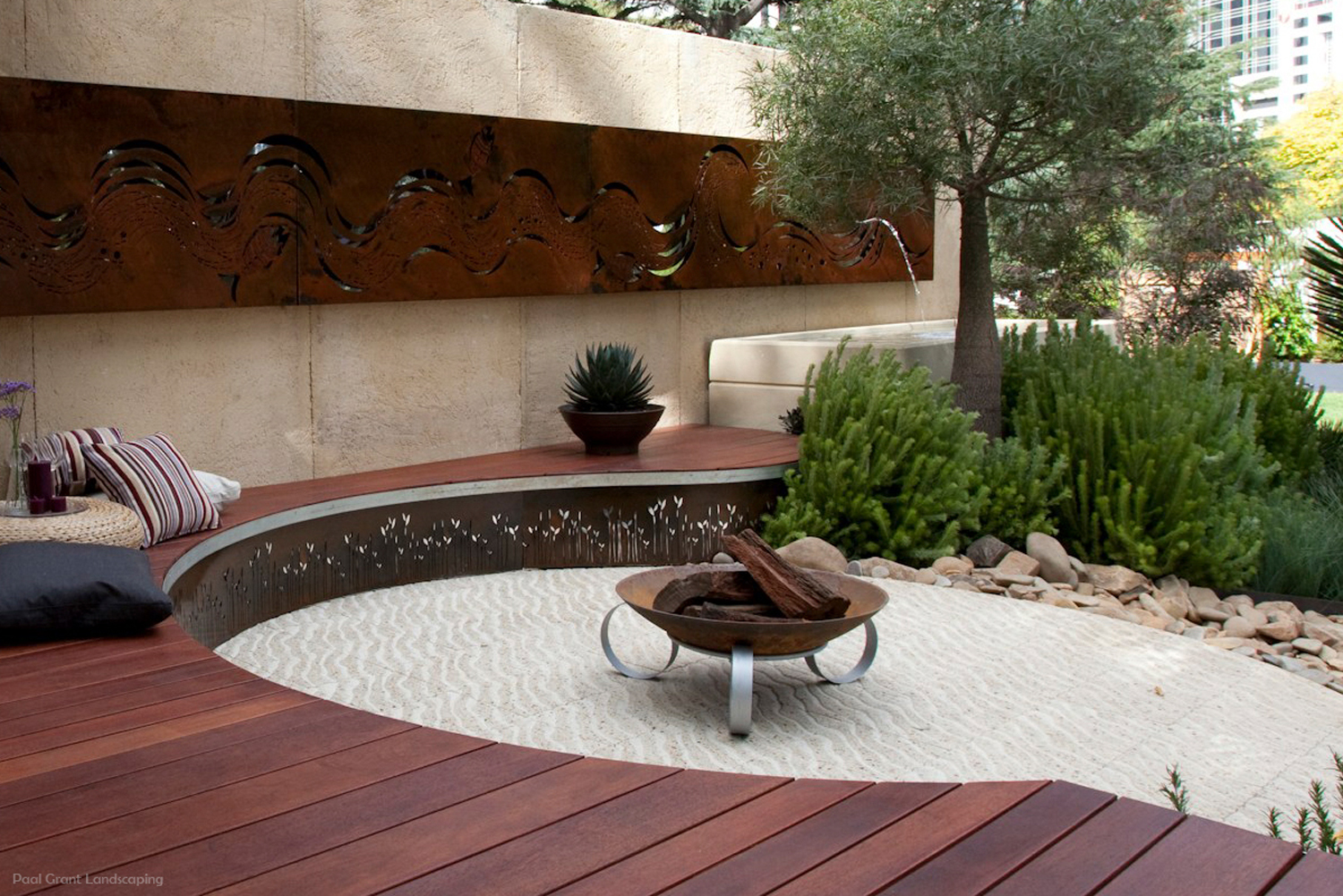
Story: Louise Weihart
Photos: Patrick Redmond
Imagine the mystery and adventure of Tolkien, The Faraway Tree and The Enchanted Forest. Imagine an escape into a fantasy land of organised chaos with a gothic bent, ruined castle and real forest.
The transformation of a tired, old, unkempt back garden on a suburban block in North Fitzroy has created just this: a gothic masterpiece in the heart of modern Melbourne.
When David Kirkpatrick of Outdoor Creations was called in to consult on this garden makeover, he found “a messy overgrown jungle with mounds of dirt and rubble and higgledy piggledy plants”.
The family was happily living in its old Victorian weatherboard house, but the garden had gone to rack and ruin and it was time to do something.
The brief from the owners, one of whom is a student of the mediaeval, was to create something mysterious with an olde-worlde feel and a gothic bent. The couple had travelled extensively through Europe, loved Notre Dame and wanted to capture the feel of the mediaeval past.
The resulting garden evolved from the existing entertaining area, which, as David points out, was limited by the space of the outdoor dining area that led directly off the kitchen/dining rooms.
It’s a fairly small area, says David, so he chose random paving stone with bluestone walls set in curves to create an entry point into the rest of garden, which is where “the real mediaeval adventure starts”.
To achieve the mediaeval, gothic feel, David included a number of impressive features in the garden. The cornerstone feature is a magnificent gothic pavilion with a huge raised water feature and gargoyle sitting atop a ruined castle in the water.
Visible from the house, but found at the back of the garden, the feature can be reached by following various pathways that are also highlights of the garden. The owner is delighted with her gothic pavilion and says the area is ideal for entertaining. “It’s a place in which the family and guests alike can interact with the gothic pavilion,” says David.
David explains there’s a number of pathways in the garden, another one leading to the rear lane and another leading through the forest to the front garden. And it’s a real forest, all right. As David points out, it might be small but the effect of planting lots of trees close together has created an authentic forest.
Higgledy piggledy plants have been replaced by lots of exotics such as ferns, maples, birches and lilies. There’s a crowded feel with, as David describes, “things climbing over each other and seemingly fighting for existence.
“There’s a sense that the garden is in a manufactured state of decay,” says David. “The main challenge was to fit all the features in the space without making it look crammed.
“But an added beauty of the garden is that it is very much self-maintaining and therefore a garden to be used and enjoyed, rather than one to work in.” And that is exactly what the owners wanted. “They just wanted a low-maintenance garden they could love, not garden in,” says David.
The “organised chaos” has certainly hit the spot with the owner, who perceives the garden as “organic and classical” rather than disorganised. “It might seem to be chaotic,” she says, “but it is beautifully held together by the circular design.”
The main materials used are sandstone and bluestone, in keeping with the owners’ request. “We wanted the warmth of sandstone to complement the existing bluestone,” the owner explains.
Within two months, the owners had what can only be described as a unique garden that, in David’s words, “gets the owners in touch with what lights them up”.




